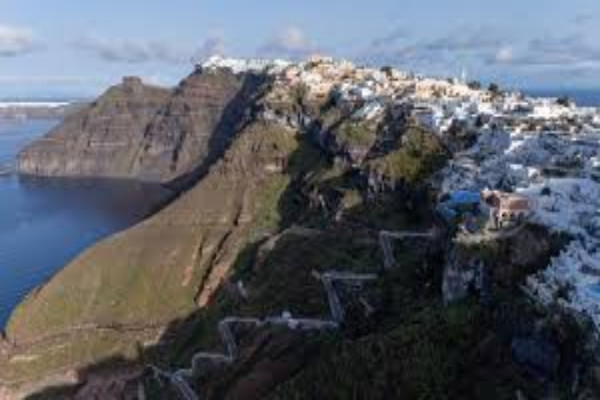Hundreds of small earthquakes that shook Greece’s tourist hotspot of Santorini
this week have revived concerns about the safety of a decades-long construction boom along the island’s sheer, volcanic cliffs, experts said.
No serious damage has been reported, but scientists have warned that the seismic activity could last for weeks and have not ruled out the possibility of a larger quake to come.
That worries experts, some of whom have long questioned the sustainability of turning the small island of quaint villages into one of Europe’s most popular holiday destinations.
“They wanted to develop the island and didn’t pay attention to environmental and safety issues,” said Dimitris Papanikolaou, professor of geology at the University of Athens and former head of Greece’s Earthquake Planning and Protection Organisation.
The result, he said, was clear today: luxury hotels with pools and jacuzzis hanging off Santorini’s landslide-prone slopes, where the volcanic soil is soft and unstable.
“Nothing should have been built in this zone,” Papanikolaou said. “It’s a danger zone for as long as the seismic activity lasts.”
The tremors prompted the government to declare a state of emergency on Thursday. It shut schools, deployed the army. Meanwhile, thousands of people left on planes and ferries.
Authorities announced landslide warnings for five areas, including Santorini’s main port, and cordoned off areas along the caldera – the rim of an ancient, sunken volcano whose sides plunge into the clear waters of the Aegean.
Excessive tourism has raised concerns about water shortages and overcrowding across Greece in recent years. But Santorini is an extreme example. Millions visit its whitewashed cobbled streets and blue-domed buildings each year.
Natural disasters are not new to the island, which was formed by a volcanic eruption in 1600 BC and which experienced a devastating earthquake in 1956. A modern building boom began in the 1980s to lure back tourists.
Even before the latest earthquakes, experts called for studies to assess whether buildings needed reinforcements.
In 2021, a report by the Hellenic Society for Environment and Cultural Heritage commissioned by the island’s authorities said there was an urgent need for a soil engineering study to assess the safety of the buildings on the caldera.
Citing data from the Technical Chamber of Greece, it found many buildings had no permits, nearly a quarter of which where tourism businesses.
The environment ministry halted construction on the caldera in November for a year and has obliged owners to complete risk assessments or face having permits removed, said Dimitris Bakoyiannis, its secretary general for spatial planning and urban environment.
Prime Minister Kyriakos Mitsotakis urged calm when he visited the island on Friday and defended construction standards in an interview with Reuters.
“We have a very strict building code which is applied across the country, especially in those areas that are more earthquake prone,” he said. “That’s why we feel very, very confident that everything that could be done, has been done.”
With Reuters inputs
Thirty eight years in journalism, widely travelled, history buff with a preference for Old Monk Rum. Current interest/focus spans China, Technology and Trade. Recent reads: Steven Colls Directorate S and Alexander Frater's Chasing the Monsoon. Netflix/Prime video junkie. Loves animal videos on Facebook. Reluctant tweeter.





